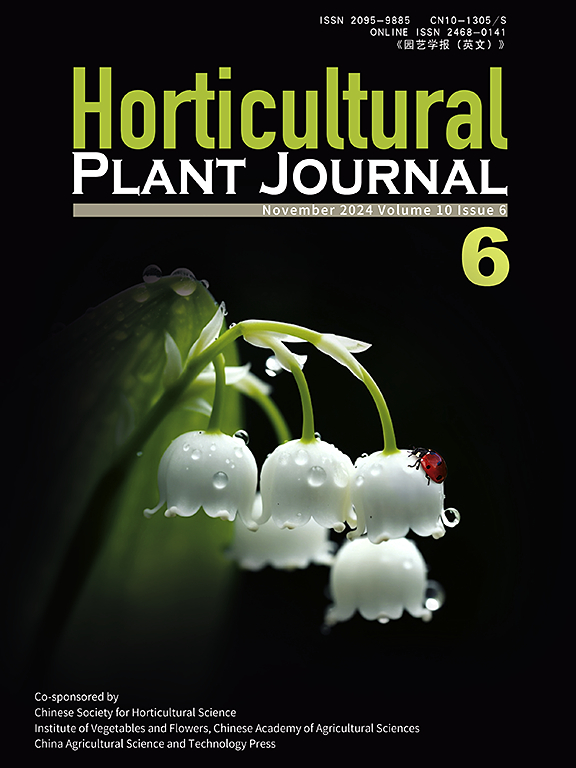MADS-box BSISTER transcription factors up-regulate proanthocyanidin biosynthesis in grapevine
IF 6.2
1区 农林科学
Q1 HORTICULTURE
引用次数: 0
Abstract
Proanthocyanidins (PAs) are a group of oligomeric flavonoids also known as condensed tannins. PAs in human diet have antioxidant and health-promoting effects. BSISTER (BS) promotes the accumulation of PAs, but its direct target gene and regulation mechanism in PAs biosynthesis are not clear. Here, we reportedMADS-box BSISTER转录因子上调葡萄原花青素的生物合成
原花青素(PAs)是一组低聚类黄酮,也被称为缩合单宁。人类饮食中的PAs具有抗氧化和促进健康的作用。BSISTER (BS)促进PAs的积累,但其在PAs生物合成中的直接靶基因和调控机制尚不清楚。本研究报道了VviBS1和VviBS2基因,这两个基因直接结合到PA合成启动子关键基因VviANR (ANTHOCYANIDIN REDUCTASE)和VviLAR (LEUCOANTHOCYANIDIN REDUCTASE)上,并上调其表达,促进葡萄中PA的生物合成。VviBS1和VviBS2部分恢复了拟南芥tt16突变体的透明睾丸表型。葡萄愈伤组织中BS1和BS2的过表达增加了PAs的含量,也增加了PA合成相关基因的表达。VviBS1和VviBS2蛋白直接结合到关键PA合成基因VviANR1、VviANR2和VviLAR1的启动子区域。VviBS1和VviBS2的过表达促进VviANR1、VviANR2和VviLAR1的表达和PAs的生物合成。一些与BS1和bs2相互作用的MADS-box蛋白对PAs的生物合成有影响。该研究揭示了葡萄PA生物合成的调控机制,可有效地用于代谢工程以提高PA含量。
本文章由计算机程序翻译,如有差异,请以英文原文为准。
求助全文
约1分钟内获得全文
求助全文
来源期刊

Horticultural Plant Journal
Environmental Science-Ecology
CiteScore
9.60
自引率
14.00%
发文量
293
审稿时长
33 weeks
期刊介绍:
Horticultural Plant Journal (HPJ) is an OPEN ACCESS international journal. HPJ publishes research related to all horticultural plants, including fruits, vegetables, ornamental plants, tea plants, and medicinal plants, etc. The journal covers all aspects of horticultural crop sciences, including germplasm resources, genetics and breeding, tillage and cultivation, physiology and biochemistry, ecology, genomics, biotechnology, plant protection, postharvest processing, etc. Article types include Original research papers, Reviews, and Short communications.
 求助内容:
求助内容: 应助结果提醒方式:
应助结果提醒方式:


